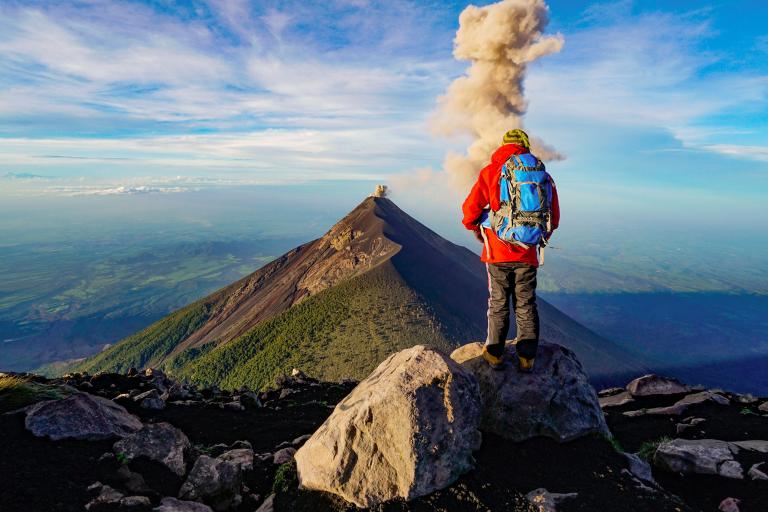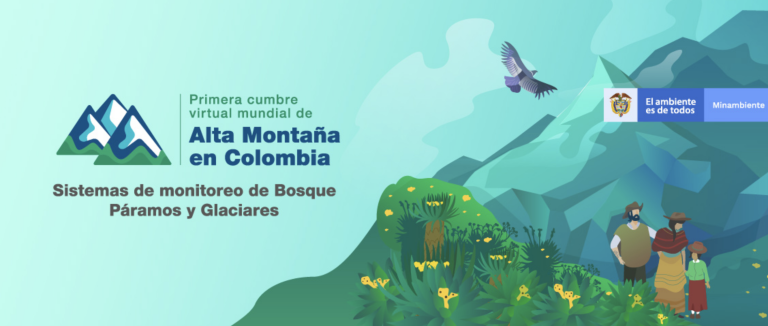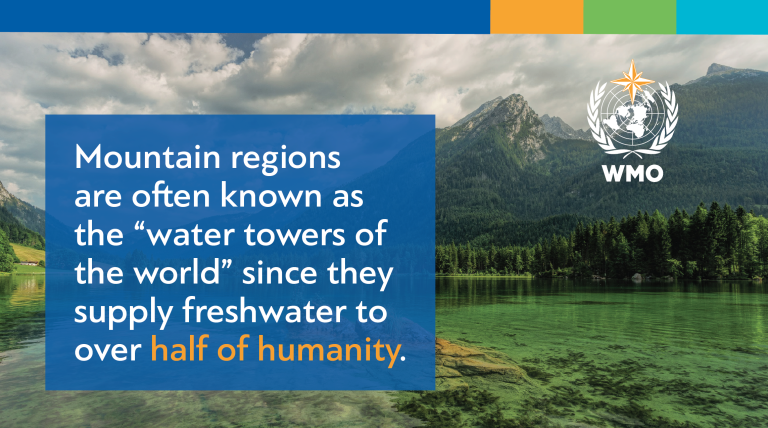WMO supports Virtual High Mountain Summit
The World Meteorological Organization is supporting the First World Virtual High Mountain Summit, which is spearheaded by Colombia. It brings together more than 50 participants from four continents from the public and private sectors, academia, and civil society, to discuss biodiversity and ecosystem services as well as climate variability and change.

The World Meteorological Organization is supporting the First World Virtual High Mountain Summit, which is spearheaded by Colombia. It brings together more than 50 participants from four continents from the public and private sectors, academia, and civil society, to discuss biodiversity and ecosystem services as well as climate variability and change.
The event is organized by Colombia’s Ministry of the Environment and Sustainable Development and its National Meteorological and Hydrological Service IDEAM. It coincides with International Mountain Day, which is celebrated annually on 11 December to create awareness about the importance of mountains to life.
“Mountains are home to stunning biodiversity. Mountain regions host more than a quarter of terrestrial plants and animals and 30 per cent of key biodiversity areas on land. At a time of accelerating climate change and land degradation, this year’s observance of International Mountain Day highlights these threats and the importance of mountain ecosystems,” said United Nations Secretary-General António Guterrez.
“Mountain glaciers are losing their glaciers at an unprecedented rate. Snow depth in high mountains is expected to decrease by 10 to 40 per cent between 2031 and 2050. Mountains must move to the centre of our attention – and it is time to move mountains to secure the changes we need to secure the health of our planet and to build a sustainable future for all,” he said in a message.

The Virtual Summit organized by Colombia seeks to:
- highlight impacts of climate change on mountain ecosystems and increased risks of mountain-specific natural hazards;
- foster engagement forincreased cooperation and adaptation strategies,
- focus on three themes: biodiversity and ecosystem services, climate change and variability, and governance and social appropriation.
The President of Colombia, Iván Duque, has proposed a Global Alliance for the Conservation of Paramos, high, tropical mountain vegetation above the continuous timberline, found in particular in South America’s northern Andes.
“We are happy to support your initiative to build the Alliance of the Conservation of Paramos, which is a critical mountain ecosystem and a very important source of water and biodiversity,” WMO Secretary-General Prof. Petteri Taalas said in a video message to the Virtual High Mountain summit.
Mountain regions cover about a quarter of the Earth’s land surface. They are important sources of freshwater, centres of biological and cultural diversity as well as traditional knowledge, being home to a quarter of the world’s population.
However, rising global temperatures are causing changes to mountain meteorology, hydrology, and ecology. Natural hazards, environmental alterations and the loss of critical mountain ecosystems are increasing the risk of local and downstream disasters.
River basins with headwaters in the mountains supply freshwater to over half of humanity, thus mountains are often referred to as “the water towers” of the world.
The anticipated increase in uncertainty in water availability from mountain rivers is a significant risk factor for local and downstream agriculture, forestry, food production, fisheries, hydropower production, transportation, tourism, recreation, infrastructure, domestic water supply and human health.

Colombia was an active participant in the WMO Summit. The head of IDEAM and Permanent Representative to WMO, Yolanda Gonzalez Hernandez, was recently elected President of WMO’s Regional Association for South America.
WMO has a number of activities in the Andean region.
ENANDES - Enhancing Adaptive Capacity of Andean Communities in Colombia, Peru and Chile. The project seeks to enhance the capacity of communities in Chile, Colombia, and Peru to adapt to a varying and changing climate. This will be done by producing, communicating, and assessing the use of credible and authoritative information as the scientific evidence for decision-and policy making on disaster preparedness. It takes place during the coming five years (2021-2025).
BRAVA - Building Regional Adaptive capacity and resilience to climate Variability and change in vulnerable sectors in the Andes – brings together Peru, Bolivia and Argentina in a project from 2021-2027. The project will strengthen the NMHSs’ capacity to produce and deliver Weather Water and Climate information to support the development and implementation of National Adaptation Plans.
HydroSOS seeks to improve the access to information in support of water resource management and will integrate status and outlooks on mountain snow and glaciers as a critical source of water. This is essential for the high-mountain ecosystem in South America, in particular for summer months in Colombia, Ecuador, Peru and Bolivia.
The Flash Flood Guidance System (FFGS) for Northwest South America is critical for several countries, especially given increasing hazards as a result of snow and glacier melt.
The Global Basic Observing System seeks to improve observing systems, especially in data-sparse regions of Africa and South America.
Lack of key observations, including high-mountain snow and glaciers, hinders a comprehensive understanding of Andean hydro-climate, with implications for maladapted policy and investment. Predictions in high mountainous terrain suffer from large uncertainties that can only be tackled through better understanding, better observations and more appropriate models.
- WMO Member:
- Colombia










